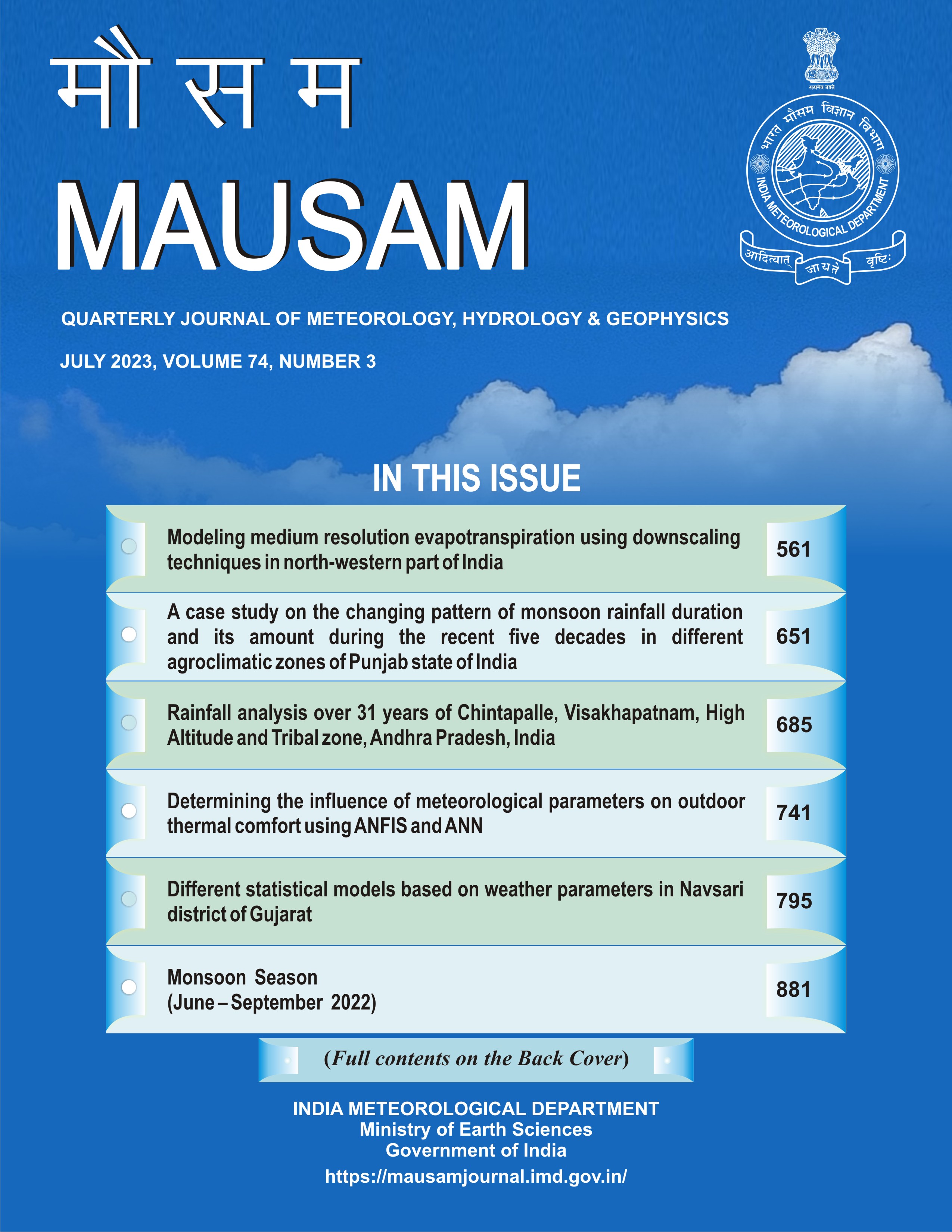Trends in climate change observed under tropical wet and tropical montane climates; A case study from Sri Lanka
DOI:
https://doi.org/10.54302/mausam.v74i3.5993Abstract
Climate change-related changes in temperature and precipitation trends must be investigated at local, regional and global levels. Temperature and precipitation trends in two selected regions having tropical wet and tropical montane climates (i.e., Colombo and Nuwara Eliya respectively) in Sri Lanka were studied for a 30 year period from 1989 to 2019, to evaluate the temporal dynamics of climate change. Precipitation trends were analyzed on annual, monthly, and seasonal scales, while the trends in mean, minimum, and maximum temperatures were examined on annual and monthly scales. Decadal time series plots were used to study decadal variations in average temperature and precipitation. The trends in extreme temperature and precipitation events were also evaluated. In addition, the trends in diurnal temperature range (DTR), cool and warm nights, and heat index (HI) were studied. The significance of trends was evaluated using the Mann-Kendall test, while the magnitude of the slope was assessed by Sen’s slope estimator. Clear statistically significant increasing trends were observed for the mean annual temperatures under the tropical wet and tropical montane climates, and no clear trends were observed in annual precipitation in both districts. There were decreasing trends in south-west monsoon rainfall, with a significant decrease in Nuwara Eliya under the tropical montane climate. Increasing trends were observed for the average monthly precipitation in November (i.e., during the inter-monsoonal rains) and average monthly temperature in April (i.e., the hottest month) over the last decade (i.e., 2010-2019) in Colombo. The DTR has significantly decreased over the last three decades in Colombo. A significant upward trend was observed for HI values during the last decade in Colombo. Colombo also showed a statistically significant decreasing trend in the number of cool nights and a statistically significant decreasing trend in the number of warm nights over the last decade.
Downloads
Published
How to Cite
Issue
Section
License
Copyright (c) 2023 MAUSAM

This work is licensed under a Creative Commons Attribution-NonCommercial 4.0 International License.
All articles published by MAUSAM are licensed under the Creative Commons Attribution 4.0 International License. This permits anyone.
Anyone is free:
- To Share - to copy, distribute and transmit the work
- To Remix - to adapt the work.
Under the following conditions:
- Share - copy and redistribute the material in any medium or format
- Adapt - remix, transform, and build upon the material for any purpose, even
commercially.



